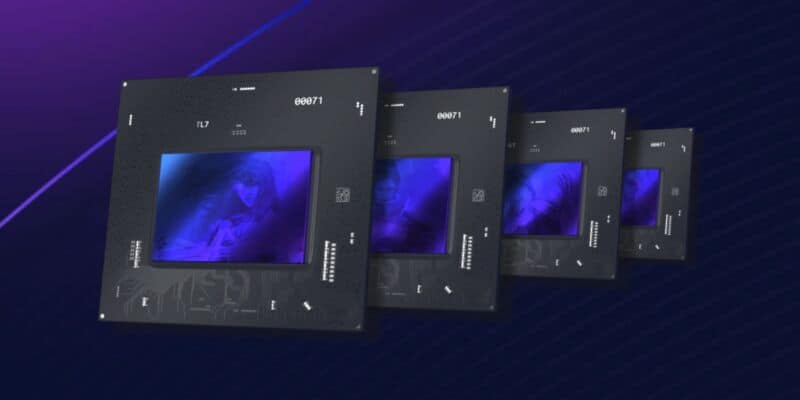Intel’s Arc GPUs continue to creep closer to release. At an investor meeting yesterday, Intel reiterated that it would be shipping mobile Arc GPUs based on its Alchemist architecture in the first quarter of 2022 and that desktop GPUs would follow at some point in Q2. Workstation GPUs would follow afterward in the third quarter.
Intel has released few official details about any of the Arc GPU configurations or performance targets, though leaked specs and benchmarks have given us a very broad idea of what we can expect. Intel graphics VP Raja Koduri tweeted a picture of an Arc GPU in a “Beast Canyon” NUC enclosure running 2018’s Shadows of the Tomb Raider, which means at least one of the GPUs will be physically small enough to fit inside that case. But pricing, availability, and even what the cards will look like are unknown.
The company plans to ship at least 4 million GPUs across its desktop, laptop, and workstation product lines in 2022, but that would represent only a sliver of the dedicated GPU market. Data from Jon Peddie Research (as compiled by Tom’s Hardware) suggests that Nvidia and AMD sold some 47 million desktop GPUs in the calendar year between Q4 of 2020 and Q3 of 2021, and that’s before you count laptop GPUs. Having another viable option in the GPU market will be good, but this small number won’t put much of a dent in the current GPU shortage.
As for the future of its graphics division, Intel shared rough release timelines for its next-generation Battlemage and Celestial GPU architectures, which will be released in “2023-2024” and “2024+” respectively. Each architecture has a slightly higher performance target than the one before it, though how competitive these products are will also be determined by the GPUs that Nvidia and AMD are shipping in the next few years. Battlemage GPUs will also be integrated into Intel’s “Meteor Lake” processors, the architecture that will be used in Intel’s 14th-generation Core processors (assuming no delays and that Intel’s current naming conventions continue).
Intel also teased a mysterious GPU-related initiative called “Project Endgame,” a service that will offer Arc GPUs “through a service for an always-accessible, low-latency computing experience.” Whether Endgame is a cloud gaming service like Nvidia’s GeForce Now or a more workstation-y service that offers GPU computing capacity remains to be seen.

